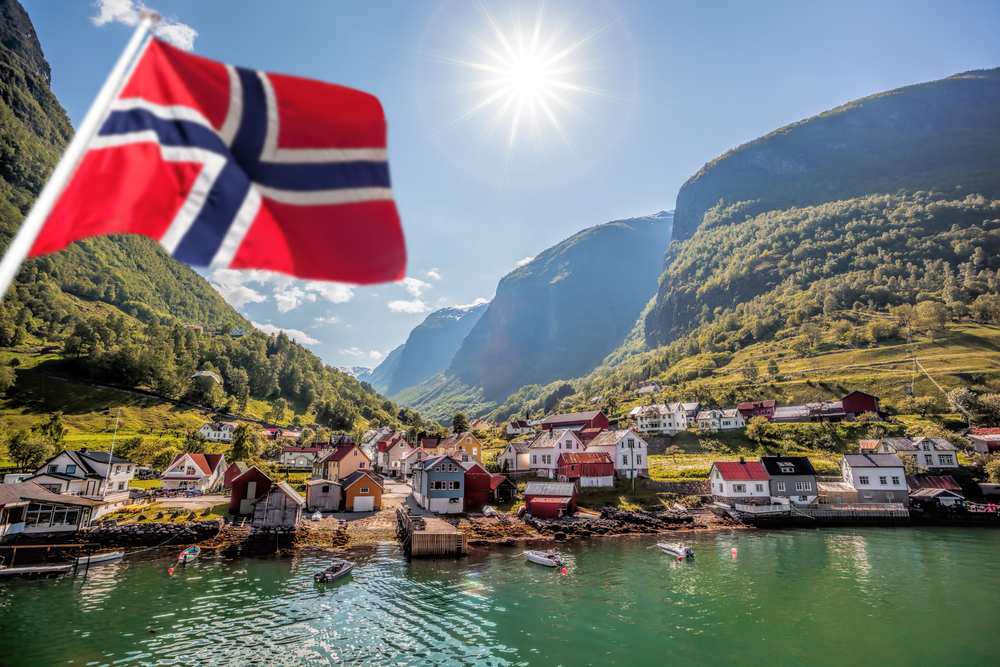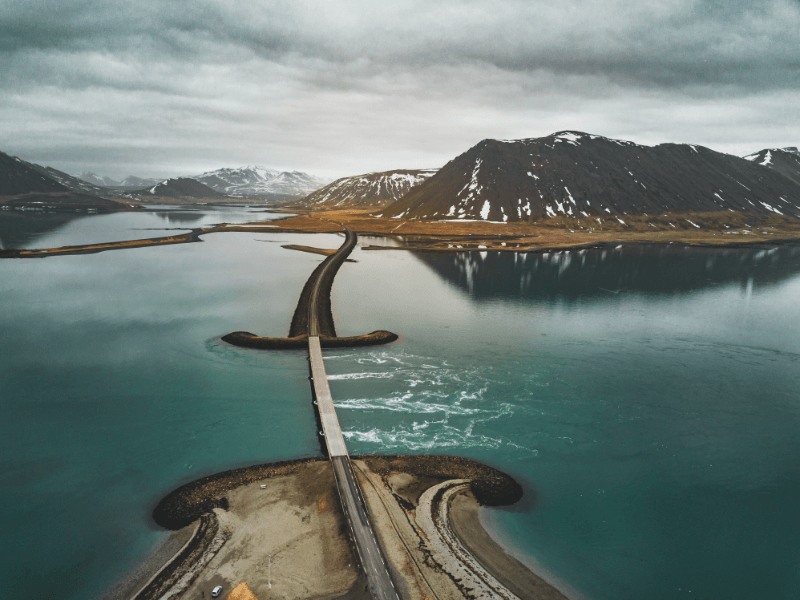Svalbard, known for its untouched wilderness and breathtaking landscapes, offers an unparalleled adventure for nature enthusiasts, wildlife lovers, and intrepid explorers. From towering glaciers and majestic fjords to vibrant wildlife and ethereal polar landscapes, Svalbard is a true Arctic gem waiting to be discovered.
As you delve into this post, you'll learn about the archipelago's intriguing history, its unique culture and population, and the regulations surrounding visits to this remote region. We'll also address common questions and misconceptions about Svalbard, including whether it is possible to live there or give birth on the archipelago.
Where is Svalbard located?
Situated in the Arctic Ocean, Svalbard is an archipelago located between Norway's mainland and the North Pole. It is situated approximately 650 kilometers (400 miles) north of mainland Norway. Despite its remote location, Svalbard is an integral part of Norway and is governed by the Svalbard Treaty, which grants certain rights to both Norway and other signatory countries.
Svalbard, the arctic archipelago
Svalbard consists of a group of islands, islets, and skerries, with the largest and most significant islands being Spitsbergen, Nordaustlandet, Edgeøya, and Barentsøya. The archipelago spans an area of approximately 61,022 square kilometers (23,561 square miles), making it one of the largest wilderness areas in Europe.
Svalbard's geography is characterized by its rugged mountains, vast glaciers, and deep fjords. Glacial ice covers about 60% of the archipelago's landmass, contributing to its stunning icy landscapes. Some of the prominent features include the majestic ice caps of Austfonna and Olav V Land.
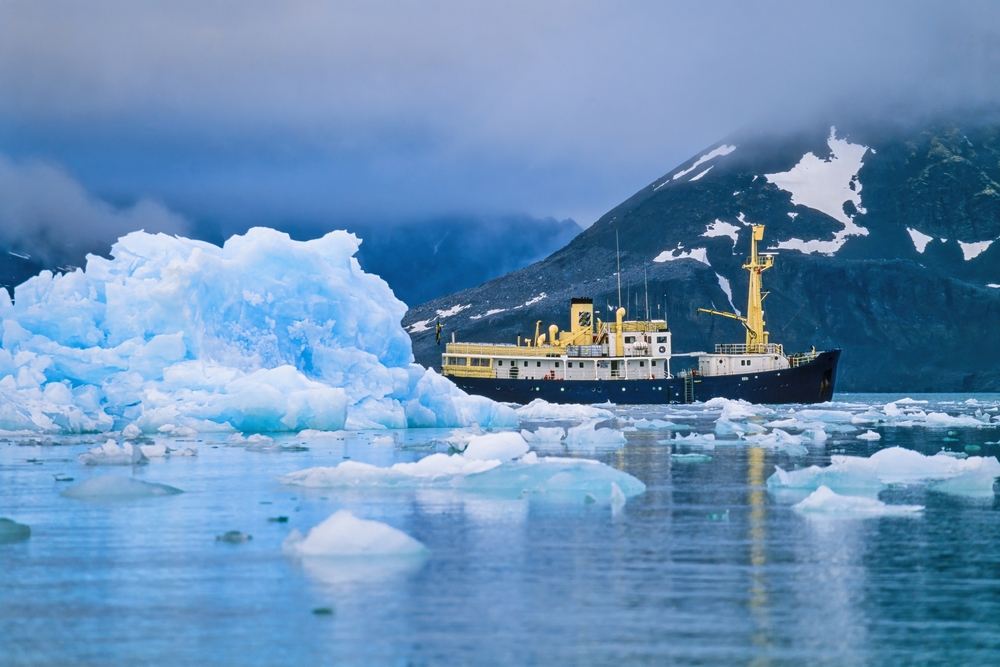
Best Islands in Svalbard
Spitsbergen
The largest and most populous island in Svalbard, Spitsbergen is home to the archipelago's administrative center, Longyearbyen. It offers diverse landscapes, from the icy slopes of the mountains to the lush valleys. Adventurers flock to Spitsbergen for its opportunities for hiking, skiing, and wildlife encounters.
Nordaustlandet
Situated in the northeast of Svalbard, Nordaustlandet is the second-largest island and is mostly covered by the ice cap of Austfonna. It is a remote and pristine wilderness, attracting researchers and those seeking untouched Arctic landscapes.
Edgeøya
Located to the southeast of Spitsbergen, Edgeøya is known for its abundant bird colonies and fascinating geological formations. It offers opportunities for birdwatching, as well as hikes through its barren, yet hauntingly beautiful, landscapes.
Barentsøya
Situated to the northeast of Spitsbergen, Barentsøya is known for its dramatic cliffs and Arctic wildlife, including polar bears, walruses, and seabirds. It provides a remarkable setting for nature enthusiasts and photographers.
These islands, along with numerous smaller ones, collectively form the enchanting archipelago of Svalbard. Their unique landscapes and remote location contribute to Svalbard's allure, making it a destination unlike any other.
Landscapes in Svalbard: An Arctic Wilderness
Svalbard boasts a captivating Arctic wilderness that enchants visitors with its pristine beauty and awe-inspiring landscapes. The archipelago's remote location and minimal human impact have preserved its natural splendor, making it a sanctuary for diverse wildlife and breathtaking scenery.
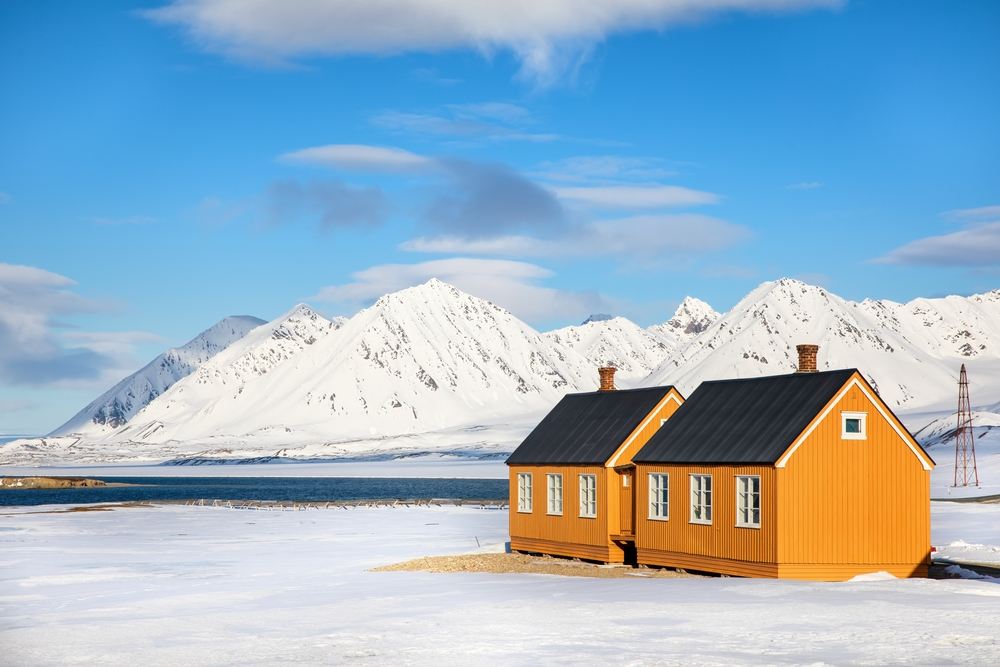
Glaciers and Ice Caps
Svalbard is renowned for its magnificent glaciers and ice caps, which dominate its landscape. Vast ice fields, such as the Austfonna and Olav V Land, carve their way through the mountains, creating majestic fjords and frozen expanses. Witnessing the sheer size and mesmerizing blue hues of these glaciers is an unforgettable experience.
Fjords and Coastlines
Svalbard's coastline is characterized by deep fjords that cut into the rugged mountains, offering spectacular vistas and opportunities for exploration. Fjords like Isfjorden, Wijdefjorden, and Hornsund provide a dramatic backdrop against the Arctic sky, while their sheltered waters serve as vital habitats for marine life.
Arctic Tundra
The vast Arctic tundra covers much of Svalbard's landmass. Delicate and resilient plant life, such as mosses, lichens, and wildflowers, dot the barren landscapes, adding touches of color to the otherwise stark surroundings. Exploring the tundra reveals a fragile ecosystem adapted to survive in the harsh Arctic conditions.
Weather in Svalbard
The weather in Svalbard is characterized by its Arctic climate, offering a unique and dynamic experience for visitors. Due to its high latitude and proximity to the North Pole, Svalbard experiences cold temperatures and distinct seasonal variations throughout the year.
Winters in Svalbard are long and exceptionally cold. From October to April, temperatures often plummet well below freezing, with average highs ranging from -14 to -6 degrees Celsius (7 to 21 degrees Fahrenheit). Snow covers the archipelago, creating a pristine winter wonderland. The polar night occurs during this period, with no daylight for several weeks, adding to the enchanting atmosphere.
Summers in Svalbard, from May to September, are relatively short but bring milder temperatures. Average highs during this season range from 4 to 10 degrees Celsius (39 to 50 degrees Fahrenheit). The Midnight Sun phenomenon occurs, with the sun staying above the horizon for 24 hours a day. It bathes the landscapes in golden light, providing extended daylight hours for outdoor activities.
Weather conditions in Svalbard can be unpredictable and can change rapidly. Visitors should be prepared for the possibility of strong winds, fog, and sudden shifts in temperatures. Proper clothing, including warm layers, windproof outerwear, and sturdy footwear, is essential to stay comfortable and safe while exploring the archipelago.
Wildlife of Svalbard
Svalbard is a wildlife lover's paradise, offering opportunities to observe unique Arctic species in their natural habitats. Polar bears, the symbol of the Arctic, roam the icy landscapes, while reindeer graze on the tundra. Other species include Arctic foxes, Svalbard reindeer, walruses, and various bird species, including puffins, guillemots, and kittiwakes.
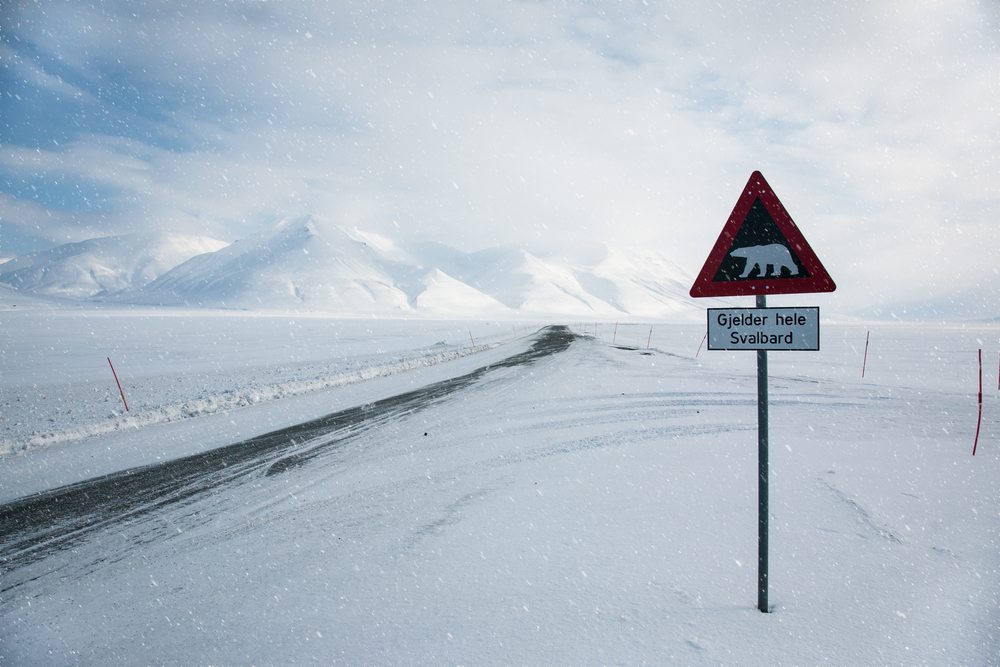
Birdwatching in Svalbard
Svalbard is home to a diverse array of migratory birds that come to breed and nest during the summer months. Bird cliffs teem with activity, providing incredible opportunities for birdwatchers to observe and photograph the fascinating avian species that inhabit the archipelago.
Northern Lights in Svalbard
Svalbard is known for its prime viewing location for the mesmerizing Northern Lights, also known as the Aurora Borealis. During the winter months, the dark Arctic skies become a canvas for dancing ribbons of vibrant colors, creating a magical and ethereal atmosphere.
Midnight Sun in Svalbard
The phenomenon of the Midnight Sun in Svalbard is a surreal and mesmerizing experience. Located near the top of the world, this Arctic archipelago is bathed in an ethereal glow during the summer months. As the sun lingers above the horizon, it never fully sets, resulting in endless daylight for several weeks.
The Midnight Sun in Norway casts a magical ambiance over Svalbard, transforming the Arctic landscapes into a surreal dreamscape. The soft golden hues paint the mountains, glaciers, and fjords, creating a breathtaking panorama. This phenomenon offers unique opportunities for exploration and adventure, as the extended daylight hours allow for round-the-clock activities.
History of Svalbard
Exploration and Early Settlement
Svalbard's history is deeply intertwined with exploration and the quest for natural resources. In the 17th century, Dutch and English whalers ventured into these Arctic waters, drawn by the abundance of whales. They established temporary settlements and hunting stations, marking the beginning of human presence on the archipelago.
Norwegian Sovereignty
In 1920, the Svalbard Treaty granted Norway sovereignty over Svalbard, recognizing the archipelago as an integral part of the Kingdom of Norway. The treaty also laid down provisions ensuring equal rights and non-discriminatory access to the resources of Svalbard for all signatory countries.
Mining Era
Svalbard's mineral resources, particularly coal, played a significant role in its history. Mining operations flourished in the early 20th century, attracting miners from various countries. Although coal mining has declined in recent decades, the remnants of mining settlements and infrastructure can still be seen across the archipelago.
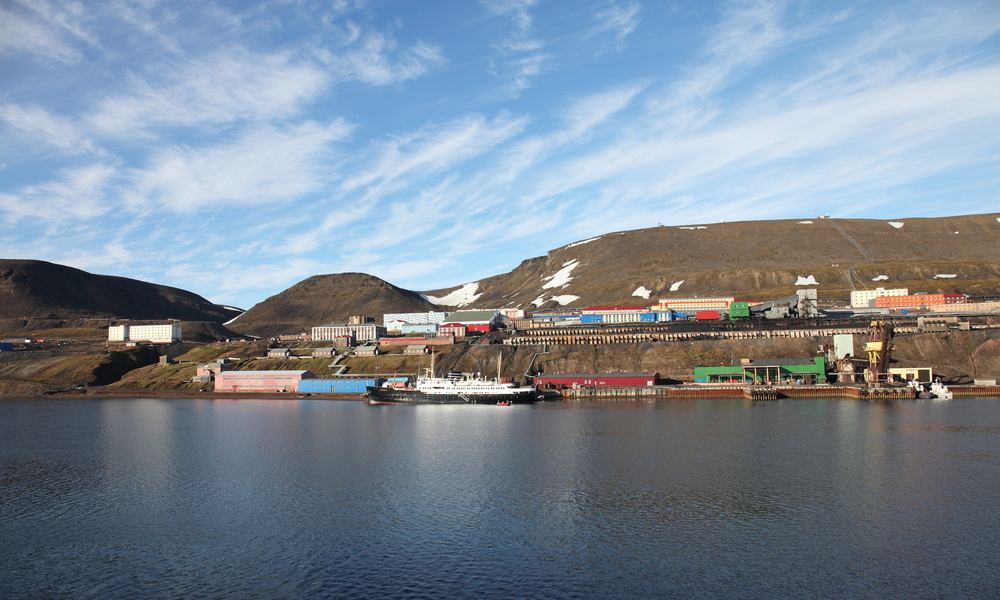
Population of Svalbard
Svalbard has a small population, with Longyearbyen being the largest settlement. As of the latest available data, the population of Svalbard is approximately 2,667 people, including both permanent residents and temporary workers. The population composition is diverse, with individuals from various nationalities contributing to the unique cultural fabric of the archipelago.
The permanent population of Svalbard is relatively small, with Longyearbyen, the largest settlement, being home to a majority of the residents. The population fluctuates due to seasonal workers, researchers and tourism.
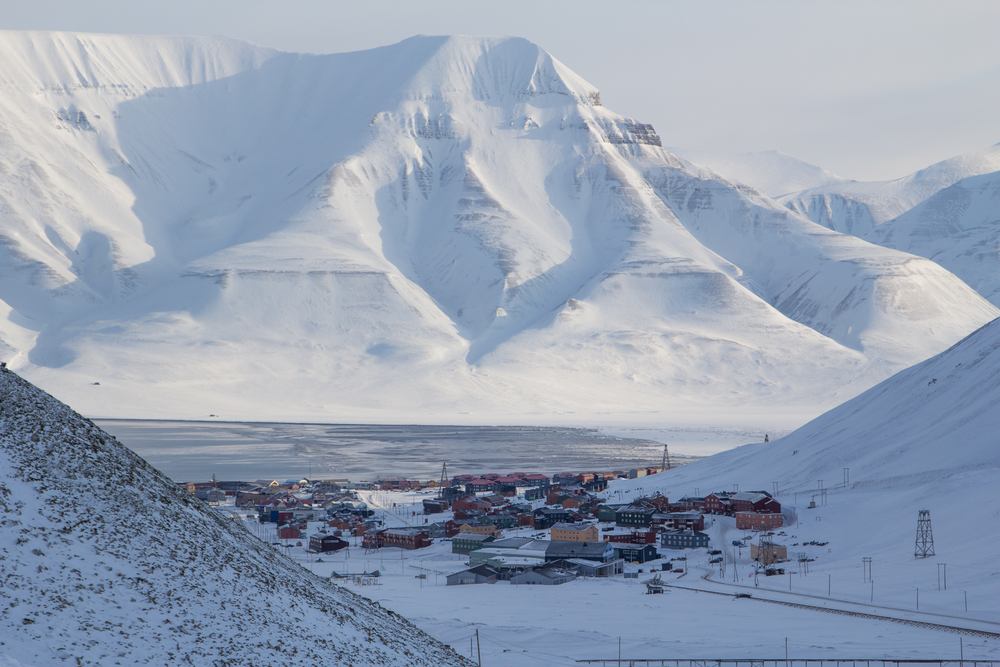
Flag of Svalbard
The flag of Svalbard serves as a symbol of the archipelago's identity and represents its connection to Norway. The flag features a white field with a red circle near the hoist side. Inside the red circle is the coat of arms of Svalbard, which consists of a polar bear standing on a crown.
The meaning and symbolism behind the flag's design is:
White Field: The white field represents the snowy landscapes and icy wilderness that dominate Svalbard. It symbolizes the pristine beauty and purity of the Arctic environment.
Red Circle: The red circle signifies the connection between Svalbard and Norway. It represents the archipelago's status as a part of the Kingdom of Norway while maintaining a distinct identity.
Polar Bear and Crown: The polar bear standing on a crown is the central element of the coat of arms displayed within the red circle. The polar bear, a symbol of the Arctic, represents the abundant wildlife found in Svalbard and its unique ecosystem. The crown represents the historical ties to the Norwegian monarchy and reflects Svalbard's status as a part of Norway.
The flag of Svalbard embodies the archipelago's natural beauty, its relationship with Norway, and the significance of its wildlife and environment. It is a visual representation of Svalbard's identity and is often displayed during official events, celebrations, and gatherings on the islands.
Can anyone visit Svalbard?
Svalbard warmly welcomes visitors from around the world, making it an accessible destination for those seeking Arctic adventures. Whether you're an intrepid explorer, a nature lover, or a curious traveler, Svalbard offers a unique and unforgettable experience.
It's important to note that there are no specific entry restrictions for Svalbard itself. However, it's essential to consider the necessary permits and regulations associated with visiting this remote Arctic archipelago.
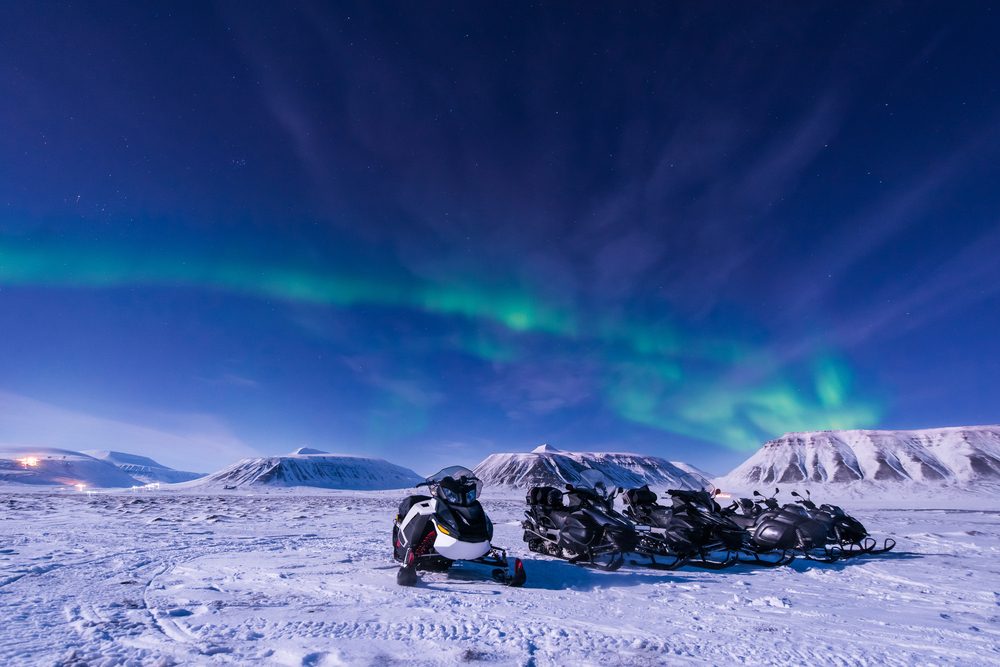
How to get to Svalbard?
The main entry point to Svalbard is through Longyearbyen, the largest settlement and administrative center of the archipelago. Longyearbyen has an airport, Svalbard Airport, which is well-connected to several major Norwegian cities, including Oslo and Tromsø. Multiple airlines operate regular flights to Svalbard, making it convenient for travelers to reach the archipelago.
Accommodation in Svalbard
Longyearbyen offers a range of accommodation options to suit different preferences and budgets. Visitors can choose from hotels, guesthouses, and cabins, ensuring a comfortable stay during their time in Svalbard. It's advisable to book accommodations well in advance, especially during peak tourist seasons, to secure your preferred choice.
Necessary permits and regulations for visiting Svalbard
Visa Requirements: Svalbard is a part of the Kingdom of Norway, and for most nationalities, there are no separate visa requirements specifically for visiting Svalbard. However, it is essential to check the visa requirements for entering Norway, as Svalbard follows Norwegian immigration regulations. Travelers should ensure they have the appropriate visas for entering mainland Norway if required by their nationality.
Safety Considerations: Svalbard's Arctic environment demands careful preparation and adherence to safety guidelines. It's important to be aware of the risks associated with polar bear encounters and follow the recommended safety protocols provided by local authorities. Additionally, travelers should pack appropriate clothing and gear to withstand the extreme weather conditions prevalent in Svalbard.
Permits and Regulations: Some activities in Svalbard may require permits or have specific regulations. For example, certain areas may have restricted access, and permits may be necessary for activities like snowmobiling, skiing, or visiting research sites. It's crucial to familiarize yourself with any applicable regulations and obtain the required permits before engaging in such activities.
By understanding and adhering to the necessary permits, regulations, and safety considerations, visitors can ensure a smooth and enjoyable experience in Svalbard. Embracing the unique opportunities for exploration, wildlife encounters, and cultural immersion, Svalbard promises an extraordinary Arctic adventure for all who venture to this captivating archipelago.
Can you live on Svalbard?
Living in Svalbard is indeed possible, with a small but resilient community calling this remote Arctic archipelago their home. While Svalbard primarily serves as a destination for research, tourism, and temporary employment, there is a permanent population residing in Longyearbyen and other settlements.
Can you buy property and settle permanently in Svalbard?
Owning property and settling permanently in Svalbard is not possible due to the Svalbard Treaty regulations. The archipelago is governed by a unique legal framework that grants Norway sovereignty but provides certain rights to other signatory countries. This framework prohibits private ownership of land and restricts permanent settlement to Norwegian and Russian citizens with certain work permits.
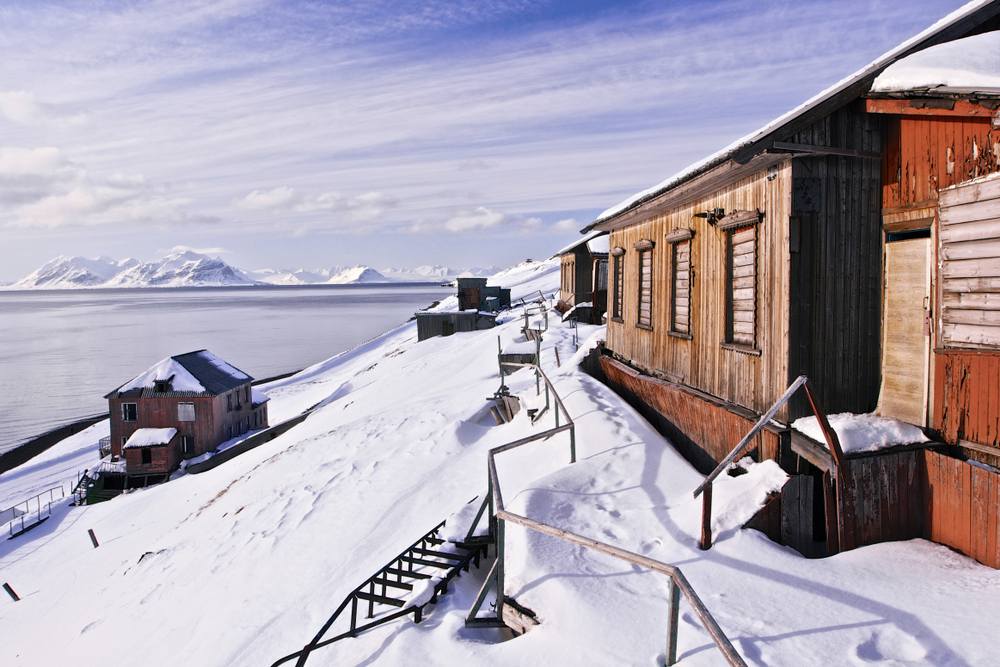
Are you allowed to give birth on Svalbard?
While there are medical facilities available in Svalbard, giving birth on the archipelago is not recommended. Due to the limited medical resources and specialized care required during childbirth, pregnant women in their third trimester are typically advised to travel to mainland Norway for delivery. This ensures access to comprehensive medical facilities and expert obstetric care.
Discover the wonders of Svalbard
Svalbard stands as a captivating Arctic archipelago, offering a world of wonders for adventurous souls and nature enthusiasts. From its remote location and breathtaking landscapes to its unique wildlife and cultural heritage, Svalbard presents a truly unparalleled experience.
As you embark on your own Svalbard adventure, may the experiences and memories forged in this remote Arctic wonderland leave you with a sense of awe, appreciation, and a desire to protect and cherish the fragile beauty of our planet's extraordinary corners.



 By
By 


